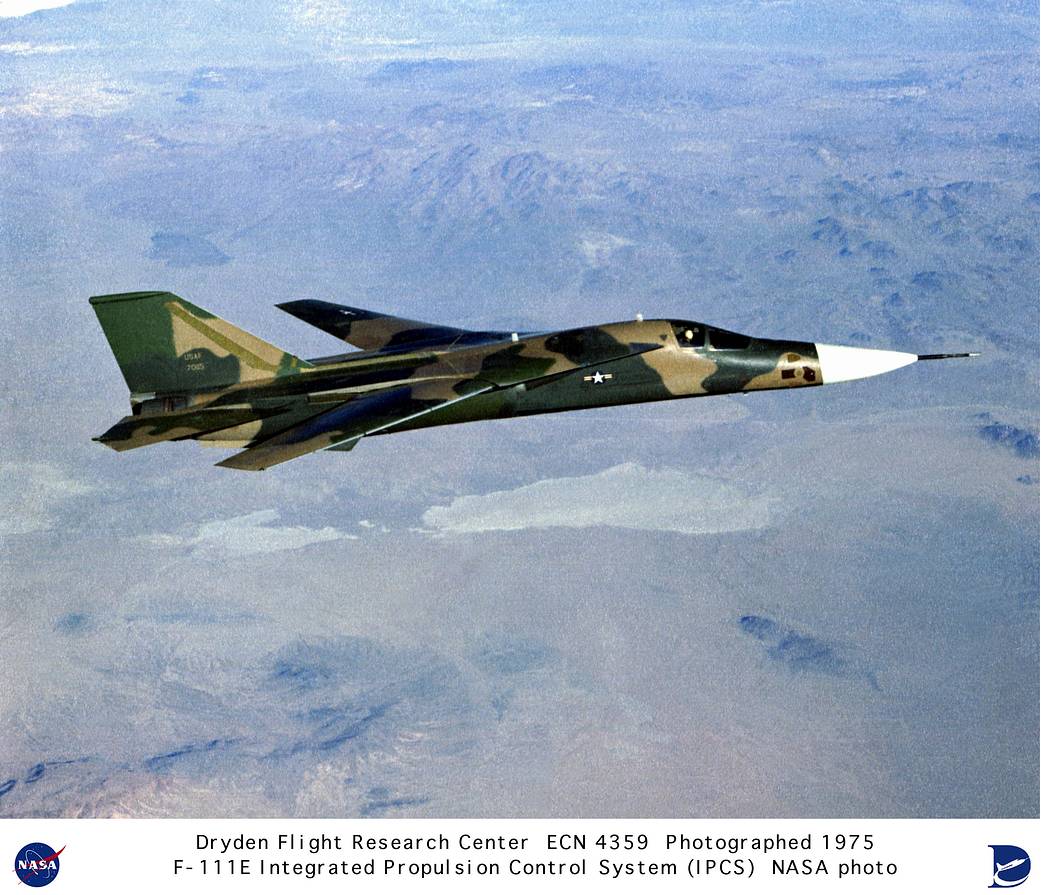ECN-4359
This NASA Dryden Flight Research Center photograph taken in 1975 shows the General Dynamic Integrated Propulsion Control System (IPCS)/F-111E Aardvark with a camouflage paint pattern. This prototype F-111E was used during the flight testing of the IPCS. The wings of the IPCS/F-111E are swept back to near 60 degrees for supersonic flight.
During the same period as F-111 TACT project, an F-111E Aardvark (#67-0115) was flown at the NASA Flight Research Center to investigate an electronic versus a conventional hydro-mechanical controlled engine. The IPCS project was a joint effort by NASA’s Lewis Research Center and Flight Research Center; the Air Force’s Flight Propulsion Laboratory; and the Boeing, Honeywell, and Pratt & Whitney companies. The left engine of the F-111E was selected for modification to an all electronic system. A Pratt & Whitney TF30-P-9 engine was modified and extensively laboratory- and ground-tested before installation into the F-111E. There were 14 IPCS flights made from 1975 through 1976. The flight demonstration project proved an engine could be controlled electronically, leading to a more efficient Digital Electronic Engine Control System flown in the F-15.January 17, 1975NASA Photo / › F-111-IPCS Project Description
1 min read


























